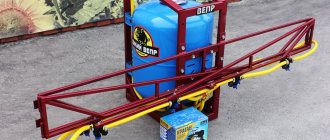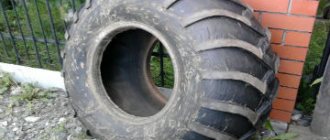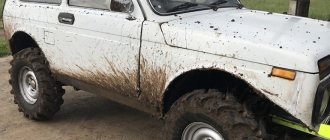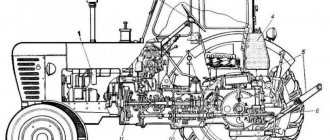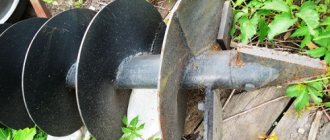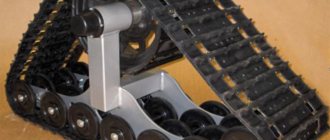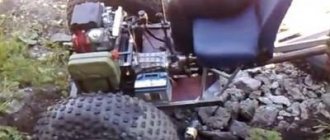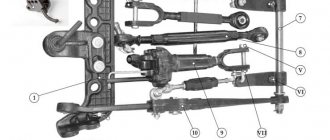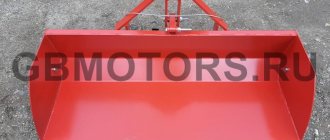A tractor-mounted sprayer is used to care for crop plants. Models are divided into several categories depending on the area of use. The capacity of mounted models starts from 200 liters, they are suitable for processing areas of up to 20 hectares. There are also manual models with a capacity of 5 liters or more for use in greenhouses. The design of the sprayer is so simple that purchasing factory models is not always necessary. You can make a sprayer with your own hands, even without qualifications or special materials.
The need for a sprayer
A sprayer is highly specialized agricultural equipment. Used for plant protection. Spraying is the most important operation when treating land against pests and weeds, therefore every farm and every gardener should have mounted sprayers on MTZ or manual ones.
Main purposes of use:
- treatment of field crops with pesticides;
- surface application of organic and mineral liquid fertilizers;
- any other operations involving the spraying of liquids.
Using a sprayer, the crop is processed.
Classification of sprayers:
- Ultra-small - volume up to 5 liters. They are used mainly in summer cottages in greenhouses and hotbeds, as well as in gardens and orchards for spot treatment.
- Small – 75–100 l. Suitable for seasonal processing of the site
- Medium - up to 200 l. Optimal for working in fields and gardens up to 20 hectares.
- Large - from 200 to 1000 l. Used in areas over 20 hectares.
Small sprayers are used with wheelbarrows and carts, medium and large ones are installed on walk-behind tractors and tractors. Mounted sprayers with a volume of more than 200 liters are designed to work with tractors of the 0.6–1.4 traction class.
The best sprayer companies
Each company produces equipment for a specific area, special climate, etc. For example, machines from the domestic developer Zarya are well suited for Russian fields. They differ from foreign analogues in their cost-effectiveness and durability. Other advantages include:
- Stabilization systems that allow you to work at high speed.
- 4-stage substance filtration system.
- Painting technologies that protect metal from rust.
- Mechanism for constant mixing of liquid.
Another good company advertised in the media is Jarmet. She is located in Poland. It produces machines for chemically treating beds and spraying liquid fertilizers. They are equipped with a filtration system (property protection), an additional container for hand washing, and an equipment rod regulator with a manual or hydraulic mechanism.
Among the companies engaged in self-propelled sprayers, the following stand out:
- Buhler-Versatile. The SX280 has auxiliary booms, proprietary software to simplify field processing, and an autopilot. The vehicle uses a powerful engine that meets the American Tier 4 emission standard. The vehicle comes with iron and polyurethane tanks.
- Case IH. The Patriot model, equipped with a stabilization system, is popular. A suspension is used that adapts to changes in terrain. The maximum speed reaches 48 km per hour, and the tank holds no more than 4500 thousand liters.
The equipment in these companies is sold retail and wholesale. In the latter case, a discount is offered (10-30%).
Design and operating principle
Main elements of the machine:
- solution tank with a hinged lid and mesh filter;
- shower spray;
- hydraulic mixer;
- membrane pump;
- manual control unit with control valve;
- pressure gauge;
- distribution rod.
To control the level of the solution in the tank, a float sensor is installed, and the test can also be carried out using the readings of the level gauge scale. A shower sprayer is provided to clean the tank after use. The homogeneity of the solution is ensured by a hydraulic mixer (stirrer). The VP-280 pump is responsible for supplying the solution. It provides flow rates of up to 240 l/min and pressures of up to 20 bar. To prepare a concentrated solution from drugs that are slightly soluble in water, a small mixing tank is provided.
Be sure to read: Homemade potato digger for walk-behind tractor
The control unit includes a control valve, an on-off valve, a pressure gauge and section valves, the number of which corresponds to the number of sections of the rod. With the help of valves, the pressure of the solution in the general system in each section of the rod is adjusted. Switching the sections into operation and switching them off is ensured by special levers. The tap regulates the intensity of mixing the solution in the tank.
The pump is a six-cylinder diaphragm type. Powered by the tractor power take-off shaft (PTO frequency 540 min-1) through the drive.
The basis of the structure is a metal welded frame. A rod holder frame with distribution pipelines is mounted on it. The bar is foldable and consists of five sections (one middle and four side). The folding of the boom can be controlled manually from the control unit. The pipelines contain nozzles at intervals of 50 cm, to which the solution is supplied.
Principle of operation:
- The solution from the tank is sucked by a pump through a stepless switch and a suction filter.
- The pressurized pump delivers the solution through a continuously variable switch and self-cleaning filter to the pneumatic block on which the control valve is located.
- From the pneumatic unit, the solution is supplied to the flow meter and then to the sectional valves of the control unit, where it is distributed through individual pipelines of the rod sections.
- Nozzles spray the solution onto the surface to be treated (plants).
A properly assembled tractor-mounted sprayer provides:
- complete and uniform spraying of the plant or part of it;
- uniform distribution of the solution over the entire working width;
- fine spraying of the solution (i.e. small droplet size) to save pesticides and prevent chemical burns to plants;
- constant solution flow and stable concentration;
- ease of use.
Advantages and disadvantages of a homemade device
The strengths of homemade equipment include the ability to configure the machine for use in local conditions, adapt the tank to the needs of the farm (volume, working substances, etc.).
Production will not require a lot of money, because the sprayer is equipped with parts from standard auto stores. Also device:
- Easily adjustable in width, which allows you to use the equipment for processing fields with different row frequencies;
- quickly repaired, because the design is simple and durable;
- can be used with any type of agricultural machinery.
Among the shortcomings are:
- The need for frequent repairs and replacement of parts.
- The need to check the bottom before each trip, because... Due to cheap materials, it deteriorates due to corrosion.
Sprayer selection
A purchased sprayer is a good option for a large enterprise, where it is easier to invest money than to divert resources to independently assemble the unit. Mounted machines with a tank volume of 900-2000 liters are suitable for agricultural enterprises with land with a total area of up to 1 thousand hectares with an average field size of about 20 hectares. The volume of the tank directly affects the productivity of the machine: the less often the refueling, the less the equipment is idle, the faster the work is carried out. It is also important to choose a powerful pump. If the power is less than 200L/min, the machine will not be able to move fast enough, and the performance will inevitably decrease. This is especially important on crops that require heavy application of garden chemicals.
The sprayer is attached using a special rod
When choosing, you should pay attention to the following points:
- Drop size. The smaller the drop, the finer the spray of the solution. This will help avoid burning the plants and at the same time save water and product consumption.
- Uniform coverage of the plant. This is the key to successful and high-quality processing.
- Constant concentration. Excessive concentration will harm plants, insufficient concentration will not provide adequate protection.
- Consumption. Economical consumption will reduce the cost of pesticides and fertilizers, which is especially important on the scale of a large enterprise.
- Convenient to store and use. In particular, the capacity of the barrel must correspond to the length of the runs. This will eliminate the need to refuel in the middle of the field and ensure optimal performance.
Be sure to read: Technical characteristics of the SUPN-8 seeder
Also, when choosing, you should pay attention to such functions as mechanical adjustment of the height of the rod, quick washing, self-pumping of water and a hand washing tank. They make work more efficient and convenient.
If possible, you should choose a mounted fan sprayer with a fan design that allows you to change the angle of attack of the blades. This will allow you to adjust the operation of the sprayer in accordance with the power of the tractor, and also work in reverse draft mode, which will avoid re-sucking the solution into the deflector and, therefore, reduce the loss of chemicals.
Making a sprayer
Let's look at how to make a tractor sprayer with your own hands from scrap materials. If you have several tens of meters of rolled metal and a pump lying around in your garage or workshop, and an old plastic tank in an aluminum frame has been standing on the site for a long time, then you will have to buy quite a bit: hoses, nozzles and a couple more components. First of all, you need to estimate what size tank the tractor can operate with. A full 1000 liter tank weighs a ton excluding hardware and external frame. It can be installed on MTZ 80 (82) tractors, but equipment of a lower traction class may not be able to cope with such a load. An alternative solution could be a trailed version, or you can take a 200-500 liter barrel.
Tools and materials
Necessary tools for work:
- metal or plastic tank with a volume of 200 to 1000 liters;
- steel angle and welding machine for making the frame;
- round metal pipes for making a rod;
- hoses and nozzles;
- electric pump with a voltage of 12 V, providing a solution supply rate of at least 200 l/min.
You can make your own sprayer
Assembly order
The assembly proceeds as follows:
- Weld a frame from a steel angle. This is the basis of the design.
- Install a pump in the tank.
- Place the tank on the frame and securely fix it.
- Mount the pipes on the frame to form a rod. Its length is selected depending on the pump power and the area being treated and, as a rule, is 15 – 16 m.
- Install nozzles on the boom at a distance of 50 cm from each other. Connect the pump drive to the tractor power take-off shaft. Install the sprayer itself on the tractor hitch.
Be sure to read: DIY vegetable cutter
This sprayer will do an excellent job of protecting plants in fields and gardens with an area of over 20 hectares.
DIY mounted sprayer for tractor
In order to save a lot of money and get a sprayer with optimal characteristics at your disposal, you can try to make such a device yourself. In order to make homemade potato sprayers for tractors, you do not need expensive spare parts or a large set of tools.
To create a sprayer with your own hands on a tractor from a compressor you will need:
- plastic container with the required volume;
- steel corners with a round section;
- steel corners with rectangular cross-section;
- solid PVC tube;
- flexible PVC tube;
- electric pump.
You can find out how to make a sprayer for a tractor with your own hands on the Internet. Today, a large number of sites offer clear and simple step-by-step instructions that even a person without the appropriate skills can understand.
Sprayer installation
When installing the sprayer, it is very important to securely fix the tank and boom. The bar can be made movable by installing a screw from an old car jack. The boom will be lifted using the tractor's hydraulics. In this case, it will be possible to spray both low-growing and tall crops, as well as flowering and berry bushes.
A convenient feature is the ability to fold the boom along the tractor body. In this case, the maneuverability of the tractor will improve, including on turns and in confined spaces. And if the boom is moved to a vertical position, the sprayer can be used for both field and garden crops, including tall shrubs, young and mature fruit trees.
Before first use, it is necessary to check the reliability of all fastenings and connections and test the equipment with clean water. After making sure that the nozzles spray the liquid thinly and evenly and that there are no leaks anywhere, you can fill the tank with the working solution.
